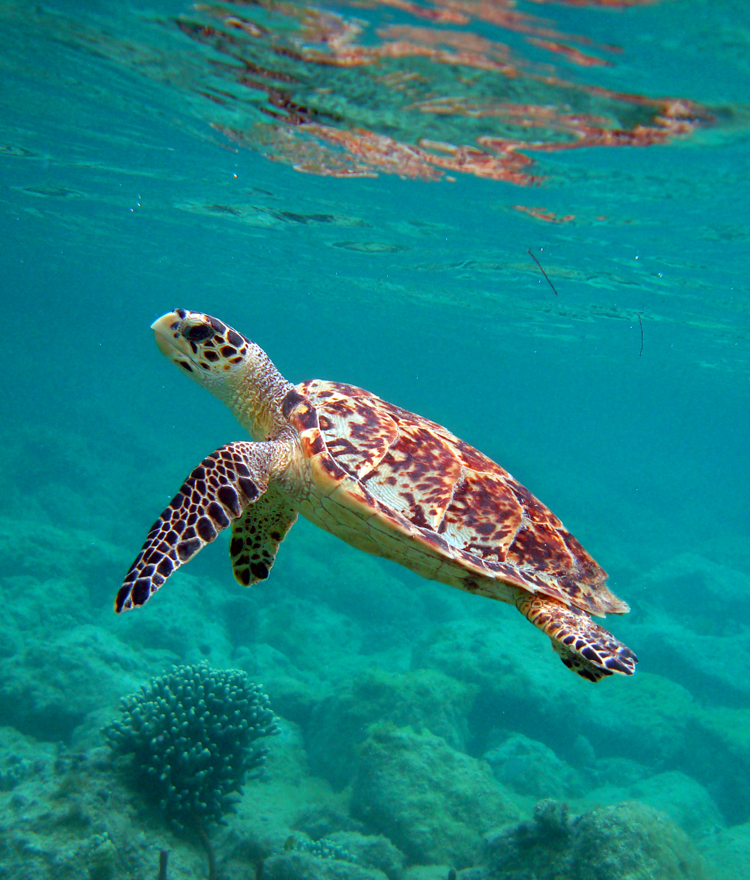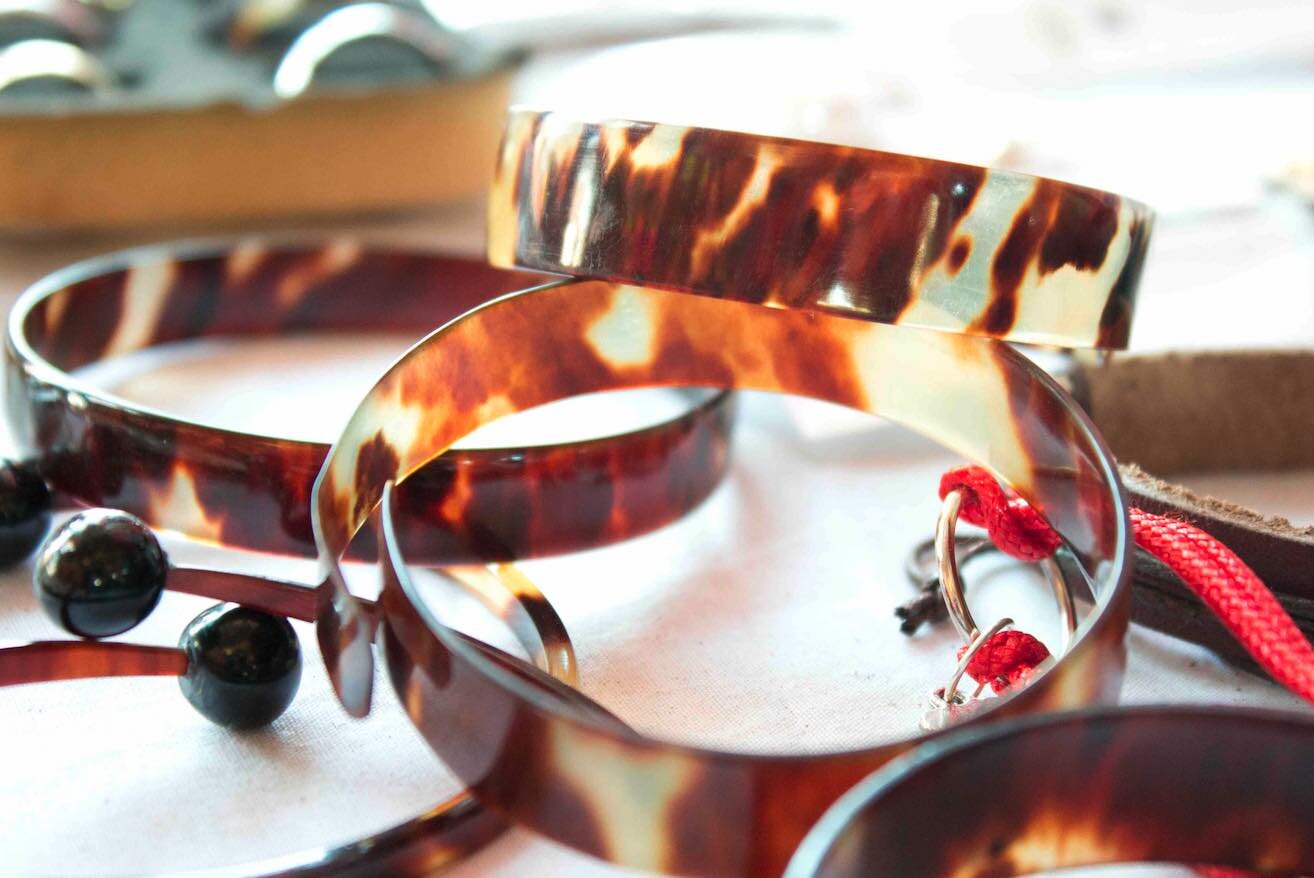
Hawksbill Sea Turtles
Considered by many to be the most beautiful of sea turtles for their colorful shells, the hawksbill is found in tropical waters around the world. They spend their time in coral reefs, rocky areas, lagoons, mangroves, oceanic islands, and shallow coastal areas.
Named for its narrow head and sharp, bird-like beak, hawksbills can reach into cracks and crevices of coral reefs looking for food. Their diet is very specialized, feeding almost exclusively on sponges. One of the smaller turtles, adults weigh between 100-200 pounds (45 - 90 kg) and reach 2-3 feet (roughly .5 to 1 meter) in length. Learn more about their diet.
Hawksbill Facts & Tidbits
These turtles are solitary nesters, nesting in low densities on small scattered beaches. Adult females are well adapted for crawling over reefs and rocky areas to reach secluded nesting sites.
On average, they nest roughly 4 times per season at 2 week intervals and lay around 140 eggs per nest. Nests however, may contain over 200 eggs!
Hawksbills are considered Critically Endangered around the world by the IUCN Red List and are listed as Endangered in the US. Some researchers believe the Eastern Pacific hawksbill is likely the most endangered sea turtle population worldwide.
Their scientific name is Eretmochelys imbricata.
Distribution
This species inhabits tropical and some sub-tropical regions in the Atlantic, Pacific, and Indian Oceans. The largest populations occur in the Caribbean Sea, the Seychelles, Indonesia, Mexico, and Australia. Hawksbills are not found in the Mediterranean and few are found in US waters; only a handful nest in Florida each year.
Hawksbill Threats
Their population has declined more than 80% in the last century, primarily due to the trade in their beautiful carapace (shell), also referred to as “tortoiseshell.” Its carapace, brightly colored with intricate designs, is traded internationally for ornamental purposes. The shell is used for items such as jewelry, combs and brushes, and inlay in furniture and other decorative pieces.
Hawksbills were hunted almost to extinction prior to the ban on the tortoiseshell trade; Japan imported an estimated 2 million turtles between 1950 and 1992. Despite the fact that the international trade of their shells is now illegal, there is still a thriving black market.
Other threats include destruction of nesting and feeding habitat, pollution, boat strikes, coastal development, entanglement in fishing gear, consumption of their meat and eggs, and destructive fishing practices like dynamite fishing. Dynamite fishing uses explosives to stun or kill fish, usually on reefs, for easy collection. The practice also causes extensive damage to coral reefs and harms other animals that may be nearby. Although illegal, this destructive type of fishing is still widespread in Southeast Asia, the Aegean Sea, El Salvador, and Africa.
Did You Know?
Because of their sponge diet, their flesh is harmful to humans. Sponges contain toxic chemical compounds which accumulate in the animal’s tissues. The consumption of their meat by humans may cause serious illness and in extreme cases even death.
Hawksbills are important inhabitants of coral reefs. By consuming sponges, they play an important role in the reef community, aiding corals in growth. It’s estimated that one turtle can consume over 1,000 pounds of sponges per year. Without them, sponges have the ability to overgrow corals and suffocate reefs.
It is illegal to trade, purchase or possess sea turtle products. When purchasing “tortoiseshell” products overseas, be sure you are buying synthetic materials.
What is SEE Turtles?
We're a nonprofit organization that protects sea turtles through conservation travel and volunteer tours, our Billion Baby Turtles, Too Rare To Wear, & Sea Turtles & Plastic programs, our education programs, and by promoting inclusivity in the sea turtle community. Our award-winning programs help save sea turtle hatchlings on important nesting beaches around the world, work with the tourism industry to end the turtleshell trade, and get plastic out of sea turtle habitats. Learn more about our organization.
Photo credits: Neil Ever Osborne, Brad Nahill/SEE Turtles, Julie Suess



